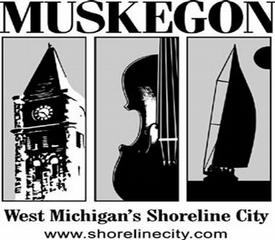Muskegon City Commission Talks Marquette Avenue Speed Limit Change
The changing of one traffic sign in Muskegon’s Marquette neighborhood generated much discussion at Tuesday’s city commission meeting.
The sign in question is on Marquette Avenue near Kraft Street, which is on the west side of the highway between Getty Street and US-31.
Heading eastbound from the Jackson Hill neighborhood, all road signs read 25 miles per hour until after Marquette School. It rises to 30 MPH going eastbound from Marquette School to US-31. However, heading westbound from the US-31 toward Marquette school, the speed limit remains 25 MPH as you approach Marquette School. This means there is a point on the road, outside the school zone, near Kraft Street where each direction has different speed marked: 25 MPH westbound, and 30 MPH going eastbound.
When the commission discussed the matter, Commissioner Lea Markowski, who hails from the east end of town, questioned why the 25 MPH sign must be increased instead of the 30 MPH sign being reduced.
City public works director Mohammed Al-Shatel explained that the change was a matter of compliance with state law. The 25 MPH sign is seen as “arbitrary” by state law, and must increase to match 30 mile per hour sign. State law prohibits so-called “arbitrary” speed controls.
Other large sections of Marquette Avenue on the west side of US-31 remain at 25 miles per hour. It only ramps up to 30 MPH near the highway as you cross over toward Baker College and Muskegon Community College.
The State of Michigan’s website discusses uniformity of speed limits:
“Arbitrary laws unnecessarily restrict drivers, encourage violations, and lack public support. Studies show that the driving environment, not the posted speed limit, is the main influence on motorist speeds.”
Vice mayor Larry Spataro also expressed apprehension on the matter, even with Al-Shatel’s explanation. He stated that the low speed limit is, to an extent, a selling point for residents of the neighborhood. People opt to live in the Marquette neighborhood to avoid living near “traffic corridors”.
He also suggested the state regulation takes power out of the hands of local communities, and hoped the change of the one sign would not lead to a further increase of speed, which he suggests some non-residential along the corridor are pushing for.
“I wouldn’t want to see a creeping speed increase.”




